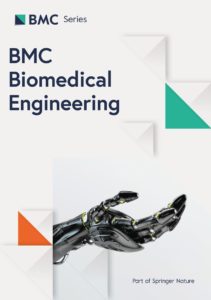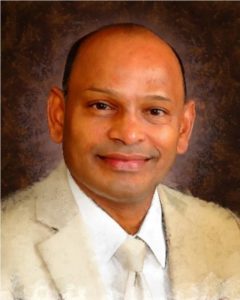
 BMC Biomedical Engineering is an open access, peer-reviewed journal that considers articles on all aspects of biomedical engineering, including fundamental, translational and clinical research. It combines tools and methods from biology and medicine with mathematics, physical sciences and engineering towards the understanding of human biology and disease and the improvement of human health.
BMC Biomedical Engineering is an open access, peer-reviewed journal that considers articles on all aspects of biomedical engineering, including fundamental, translational and clinical research. It combines tools and methods from biology and medicine with mathematics, physical sciences and engineering towards the understanding of human biology and disease and the improvement of human health.
We spoke with one of BMC Biomedical Engineering‘s Editorial Board Members (EBMs), Professor Seeram Ramakrishna from the National University of Singapore, about his perspective on the journal.
Q: When and how did you become an EBM for BMC Biomedical Engineering?
A: BMC Biomedical Engineering was launched in 2018, and published its first article in January 2019. I was invited to submit a review article to BMC Biomedical Engineering by the Editor, Dr. Lingling Tian. I was impressed with the professionalism and quality of the peer review process, and hence got interested in BMC Biomedical Engineering. Upon invitation and foresight discussions with Lingling, I gladly accepted to join the editorial board of BMC Biomedical Engineering in July 2020.
As BMC Biomedical Engineering provides an international peer-reviewed platform for these important areas, I am convinced that it will facilitate advances in the biomedical engineering community with the ultimate goal of improving human healthcare.
Q: Compared with other journals in the field, especially well-known ones, what makes BMC Biomedical Engineering different?
A: BMC Biomedical Engineering considers quality articles on all aspects of biomedical engineering. Specific topics include biomaterials, nanomedicine, regenerative medicine, tissue engineering, medical technologies, robotics and rehabilitation engineering, Biomechanics, biosensors and bioelectronics, and Biomedical Imaging. As BMC Biomedical Engineering provides an international peer-reviewed platform for these important areas, I am convinced that it will facilitate advances in the biomedical engineering community with the ultimate goal of improving human healthcare.
In addition, BMC is a pioneer of open access publishing. This year makes the 20th anniversary of BMC! As part of the BMC Series journals, BMC Biomedical Engineering is a fully open access journal. Published articles are free to read and share.
Q: How’s the paper quality of the journal and what’s your opinion on the review policy?
A: BMC Biomedical Engineering has a professional in-house editorial team, with support from a strong and international editorial board. It offers a rigorous, efficient and fair peer review service. Since its launch, BMC Biomedical Engineering has been receiving good quality submissions from around the world. BMC Biomedical Engineering‘s editorial policy requires that the reported studies must be scientifically valid; for research articles, this includes a scientifically-sound research question, the use of suitable methods and analysis, and following community-agreed standards relevant to the research field. BMC Biomedical Engineering achieved a good measure of success with 42 articles published and consistently improves its standards.
Q: Could you please share what suggestions you have for the journal’s future development?
A: We aim to grow BMC Biomedical Engineering into a renowned biomedical engineering journal with global impact in the next few years. This is a very promising biomedical engineering journal, on which I aspire to publish my own work.
In addition, I would encourage the Editors to provide more support to the authors in the research community, in particular to the junior ones who are at their early stage of research. They might be not very experienced with writing and publishing their research in scientific journal. The editors could support them by giving presentations or seminars on topics.
Q: What suggestions do you have for young researchers and author who would like to submit their paper to open access journal?
A: Open access is a good way to share and disseminate knowledge, which gives readers free and instant access, enabling faster discovery of the latest research. Young researchers are encouraged to submit their work to open access journal if their funding allows.

For General queries for BMC Biomedical Engineering, please email the Editor Lingling Tian (info@biomedcentral.com) directly.
About Professor Seeram Ramakrishna

Professor Seeram Ramakrishna, FREng, FBSE, Everest Chair is among the top three impactful-salient authors at the National University of Singapore, NUS. NUS is ranked among the top 10 engineering and technology universities in the world. He is a professor of materials engineering since 2003. He has mentored over 50 PhD students, and more than 100 post-doctoral and visiting scientists over the past 25 years. Thomson Reuters identified him among the World’s Most Influential Scientific Minds. His Google Scholar H-index exceeds 156 and his publications have attracted over 110,000 citations. Clarivate Analytics recognized him among the Top 1% Highly Cited Researchers in the world in materials science and cross-fields categories. Microsoft Academic ranked him among the top 25 authors out of three million materials researchers worldwide based on H-index.
He received his PhD from the University of Cambridge, UK. He is an elected Fellow of UK Royal Academy of Engineering (FREng); Singapore Academy of Engineering; Indian National Academy of Engineering; and ASEAN Academy of Engineering & Technology. He is also an elected Fellow of American Association of the Advancement of Science (AAAS); ASM International; American Society for Mechanical Engineers (ASME); American Institute for Medical & Biological Engineering (AIMBE); Institution of Mechanical Engineers, IMechE and Institution of Materials, Minerals & Mining, IoM3, UK; ISTE, India; and International Union of Biomaterials Science & Engineering (FBSE). He is senior member of IEEE. He has co-authored books An Introduction to Biomaterials Science & Engineering; Medical Devices – Standards, Regulations and Practices; Biomaterials – A Nano Approach; and An Introduction to Biocomposites. He is regarded as the guru of electrospinning and nanofibers. He pioneered biomimetic nanofibers and cell interactions for advancing tissue engineering, regenerative medicine, and controlled drug delivery. He teaches Engineering Materials in Medicine.
Comments